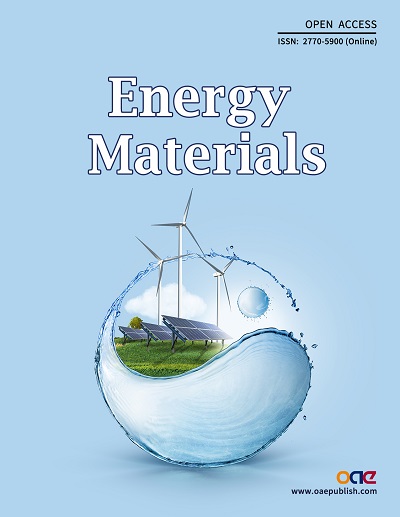Review | Open Access
Recent advances in porous multimetallic alloy-based anodes for rechargeable alkali metal-ion batteries
Views: 94
Energy Mater 2024;4:[Accepted].
Author Information
Article Notes
Cite This Article
Abstract
The rechargeable alkali metal-ion batteries (RAMIBs) are highly promising candidates for the next-generation of efficient energy storage devices, owing to their outstanding theoretical specific capacities and extremely low electrochemical potentials. However, RAMIBs possess unsuitable lifespan, low mechanical durability and inevitable side-reactions attributable to their inherent severe volumetric/structure alteration during the charge-discharge cycles. These hitches could be solved using porous multimetallic alloy-based anodes, due to their impressive specific capacities, low working potential, low cost, and earth-abundance, which can meet sustainability and practical application needs. Meanwhile, great surface area, electrical conductivity, structural stability, and ability to accommodate the generated alkali metal ions can yield satisfactory coulomb efficiency and long durability. Immense efforts are dedicated to rationally design porous multimetallic alloy-based anodes for RAMIBs, so it is essential to provide timely update on this research area. Herein, we reviewed recent advances in porous multimetallic alloy-based anodes (i.e., Sn, Mn, Mo, Co, V, and Fe) for RAMIBs (i.e., lithium-ion batteries, sodium-ion batteries, and potassium-ion batteries. This is rooting from the engineering approaches (i.e., template-based, hydrothermal/solvothermal, chemical reduction, electrochemical deposition, sol-gel, and electrospinning) to fundamental insights (i.e., mechanisms, key parameters, and calculations) and precise evaluation for structural changes, and mechanisms by various experimental, theoretical, and in-situ analysis to optimizing their performance. Also, advances in RAMIBs recycling and circular economy were discussed. Eventually, we highlighted the current drawbacks and provided proposed perspectives to solve these issues and enable practical utilization of such anodes for large-scale applications.
Keywords
Alkali metal-ion batteries, porous multimetalllic alloy-based anodes, Lithium-ion, sodium-ion, and potassium-ion batteries, battery recycle
Cite This Article
Ipadeola AK, Abdullah AM, Eid K. Recent advances in porous multimetallic alloy-based anodes for rechargeable alkali metal-ion batteries. Energy Mater 2024;4:[Accept]. http://dx.doi.org/10.20517/energymater.2024.34
Copyright
© The Author(s) 2024. Open Access This article is licensed under a Creative Commons Attribution 4.0 International License (https://creativecommons.org/licenses/by/4.0/), which permits unrestricted use, sharing, adaptation, distribution and reproduction in any medium or format, for any purpose, even commercially, as long as you give appropriate credit to the original author(s) and the source, provide a link to the Creative Commons license, and indicate if changes were made.














